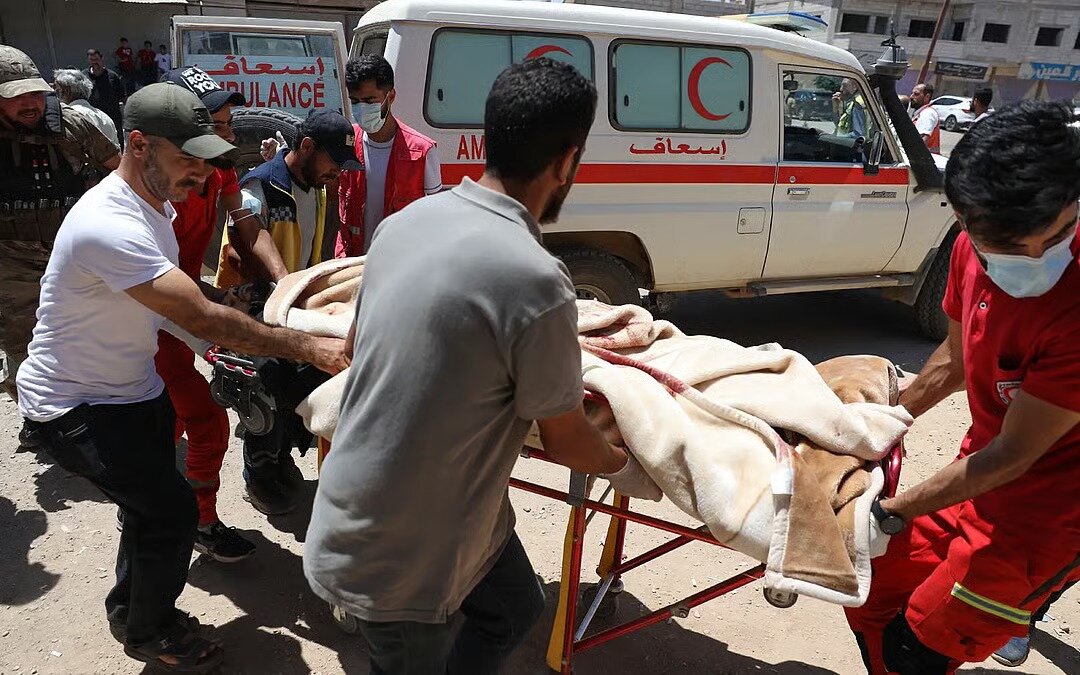What is Israel’s connection to the escalating situation in Sweida?

BEIRUT — Protests in Sweida have reignited since last week, marking the third consecutive week of demonstrations against the siege imposed by the HTS regime, further exacerbating the region’s humanitarian and economic crises.
The protests erupted in late July following attacks launched by the HTS regime’s forces on several towns, resulting in civilian casualties.
These people are currently demonstrating against what they consider “collective punishment” for more than a million people trapped in Sweida, demanding the formation of an international investigation committee to prosecute those involved in the massacres, as well as the “right to self-determination.”
What is more dangerous, however, is the raising of the flag of the Israeli occupation entity as the regime is intensively interfering to separate Sweida from Syria.
The current situation in Sweida cannot be interpreted as the result of a dispute between two individuals that has developed into sectarian dimensions, but rather as the implementation of a pre-planned Israeli plot.
Sweida was intended to be Israel’s gateway to implementing its so-called “New Middle East” project, which has been in development since it was proposed by former Israeli Prime Minister Shimon Peres.
The problem in Sweida is not new, and it did not only exist with the current government. It has existed since the outbreak of the war against Syria in 2011, when the former government made strenuous efforts to build bridges of dialogue with the Druze sheikhs, seeking to reach agreements that would help it regain all Syrian territory.
Raising the Israeli flag in Sweida is an irresponsible act and a disgrace to all Syrians, who are concerned with its downfall, just as it was previously brought down by the leader of the Syrian revolution, the Druze leader Sultan Pasha al-Atrash from Sweida.
Syria’s Druze have always been a shield for Syria in its confrontation with Israel; their revolutionary slogan was “Religion belongs to God, and the homeland belongs to everyone.”
To the last day of his life, Sultan Pasha al-Atrash remained concerned about Syria, the Golan Heights, and Palestine, resenting the rulers who had squandered Arab rights. He realized early on the ambitions of the colonial powers and their divisive schemes.
Sultan Pasha al-Atrash would tell politicians, “Do not give up the country's independence, for which we paid a cheap price with our lives.” He also said, “The eye can resist the awl.”
Sultan al-Atrash believed that the revolution had lasted 12 years because he and his fellow revolutionaries refused to surrender their weapons. He wrote in his dairies, “Sultan al-Atrash cannot be bought.”
Since that time, the methods of colonialism have not changed. The occupier continues to covet us and our wealth to achieve its own interests. We, too, must not change our belief that resistance is necessary and that the eye can resist the awl to confront colonial projects!
Obviously, Israel seeks to exploit the tense relationship between the HTS-run government and Druze by advocating efforts to establish a Druze entity, either in the form of a statelet in the south or in the form of a Druze autonomous administration linked only by a federal relationship with Damascus; this would entail establishing an 80-kilometer-deep zone within southern Syria that would be completely demilitarized.
Meanwhile, Israel also fears Turkey’s growing influence. This is particularly true after Turkey began taking concrete steps to implement the security agreements concluded between the regime and Turkey in February 2025, including the operation of the T-4 base and the Palmyra air base in Homs Governorate, and the main airport base in Hama Governorate.
This growing Turkish influence in Syria forces Israel to pursue one of two paths: the first is a direct confrontation with Turkey in Syria, an option with high political and security costs for Israel, given its ongoing, open war on the Gaza Strip for nearly a year and a half. This option is almost unlikely at the present time, although its chances are increasing given the current tense climate created by Israel in southern Syria.
The second path is a path of dialogue with Turkey, as this could provide regional sponsorship for possible future Syrian-Israeli understandings related to resolving the situation in southern Syria.
Leave a Comment